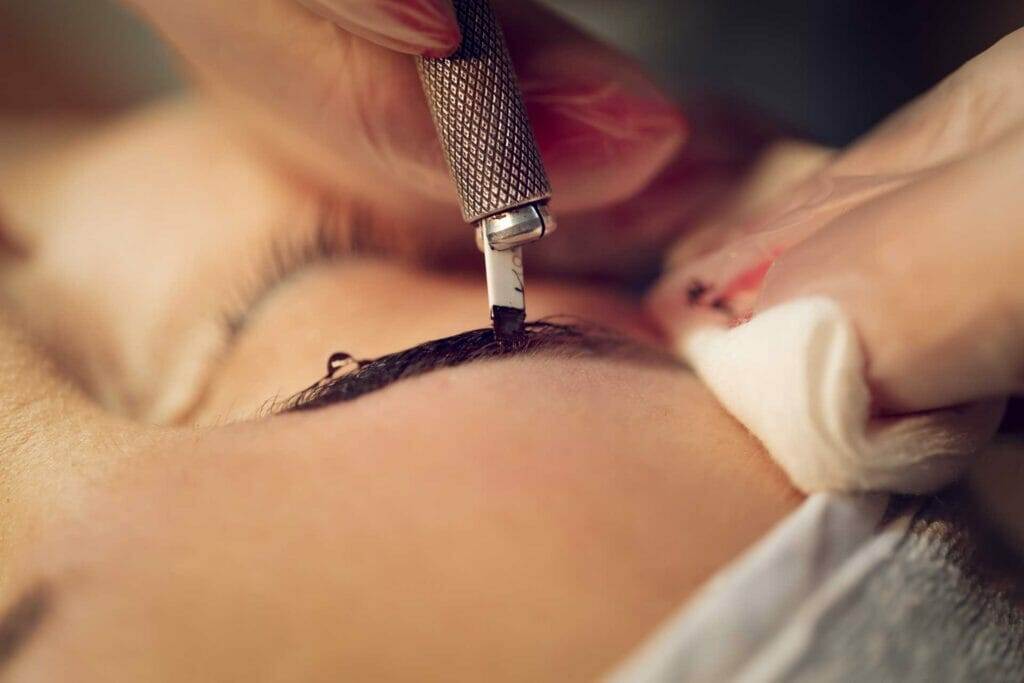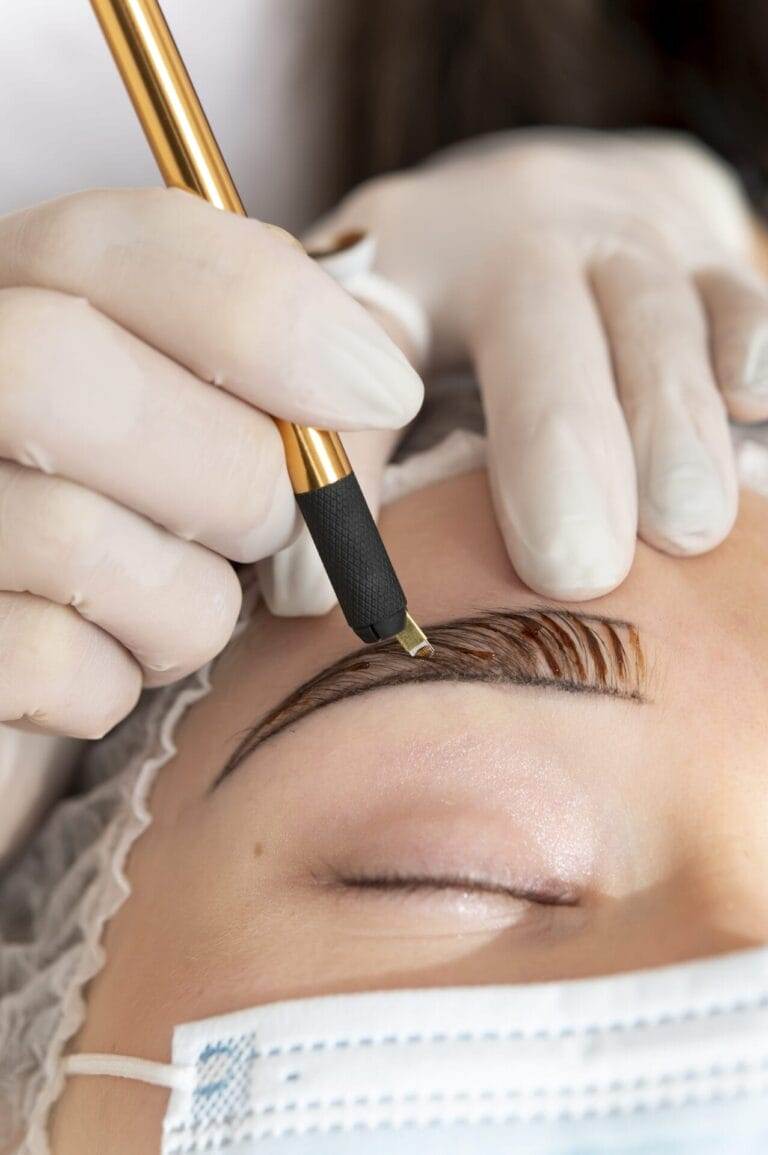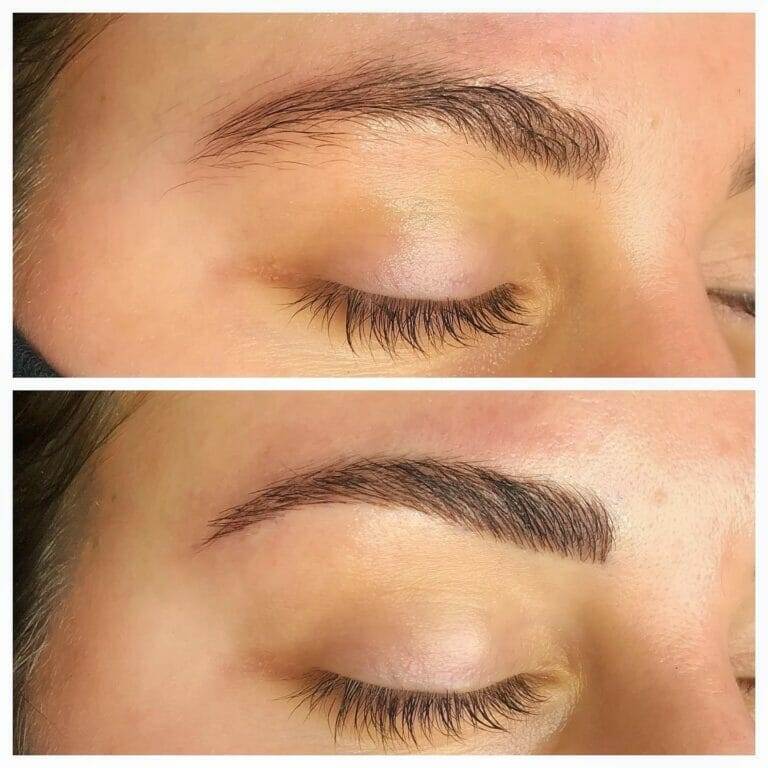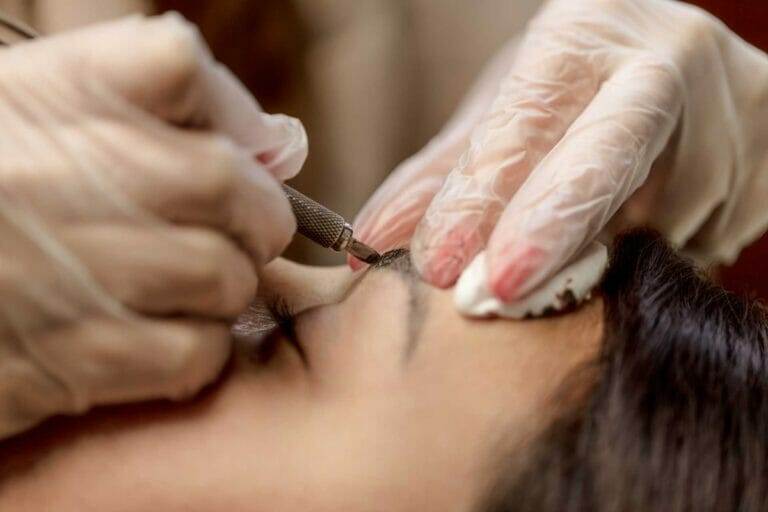Microblading is a semi-permanent eyebrow tattooing technique that has gained immense popularity in recent years. It involves using a small handheld tool with tiny needles to create hair-like strokes on the eyebrows, resulting in a natural and fuller appearance. This beauty trend has become increasingly popular due to its ability to enhance the shape and fullness of eyebrows, giving individuals a more defined and polished look.
Unlike other eyebrow treatments such as eyebrow pencils, powders, or gels, microblading offers a long-lasting solution that can last up to two years. It is a popular choice for those who have sparse or thin eyebrows, as it can create the illusion of fuller and more symmetrical brows. Microblading is also a great option for individuals who have lost their eyebrows due to medical conditions or treatments such as chemotherapy.
The History of Microblading: From Ancient Times to Modern Day
Microblading has a rich history that dates back thousands of years. The origins of this technique can be traced back to ancient civilizations such as Egypt and China. In ancient Egypt, both men and women used various methods to enhance their eyebrows, including using charcoal or kohl to darken them. Similarly, in ancient China, women used different techniques to create the appearance of fuller and more defined eyebrows.
Over time, microblading techniques have evolved and become more refined. In the 20th century, tattooing became popular as a way to enhance eyebrows. However, traditional tattooing techniques often resulted in unnatural-looking brows that were too dark or had an artificial appearance. Microblading emerged as a more precise and natural alternative to traditional tattooing methods.
Microblading has also held cultural significance in different parts of the world. In some cultures, well-defined eyebrows are seen as a symbol of beauty and femininity. For example, in South Korea, where beauty standards place a strong emphasis on flawless skin and well-groomed eyebrows, microblading has become a popular beauty treatment.
The Rise of Microblading in the Beauty Industry
Microblading has experienced a significant rise in popularity in recent years, and there are several reasons for its widespread adoption. One of the main factors contributing to its popularity is the impact of social media. Platforms like Instagram and YouTube have allowed microblading artists to showcase their work and reach a wider audience. Seeing before-and-after photos and videos of individuals with transformed eyebrows has sparked interest and curiosity among beauty enthusiasts.
Furthermore, microblading has changed the beauty industry by offering a more permanent solution to eyebrow enhancement. In the past, individuals had to rely on temporary solutions such as eyebrow pencils or powders, which required daily application and touch-ups. Microblading provides a long-lasting solution that saves time and effort in daily makeup routines.
The Evolution of Microblading Techniques: Traditional vs. Modern Approaches
Traditional microblading techniques involved using a handheld tool with a row of needles to manually create hair-like strokes on the eyebrows. This technique required a high level of skill and precision from the artist. While traditional microblading can still produce excellent results, advancements in technology have led to the development of modern microblading techniques.
Modern microblading techniques often involve the use of digital tools and equipment. These tools allow for more precise measurements and calculations, resulting in more symmetrical and natural-looking eyebrows. Digital tools can also help artists create custom shapes and designs that are tailored to each individual’s facial features.
Both traditional and modern microblading techniques have their pros and cons. Traditional techniques require a high level of skill from the artist but can produce excellent results when done correctly. On the other hand, modern techniques offer more precision and customization options but may rely too heavily on technology, potentially sacrificing the artist’s artistic touch.
The Importance of Proper Training and Certification in Microblading
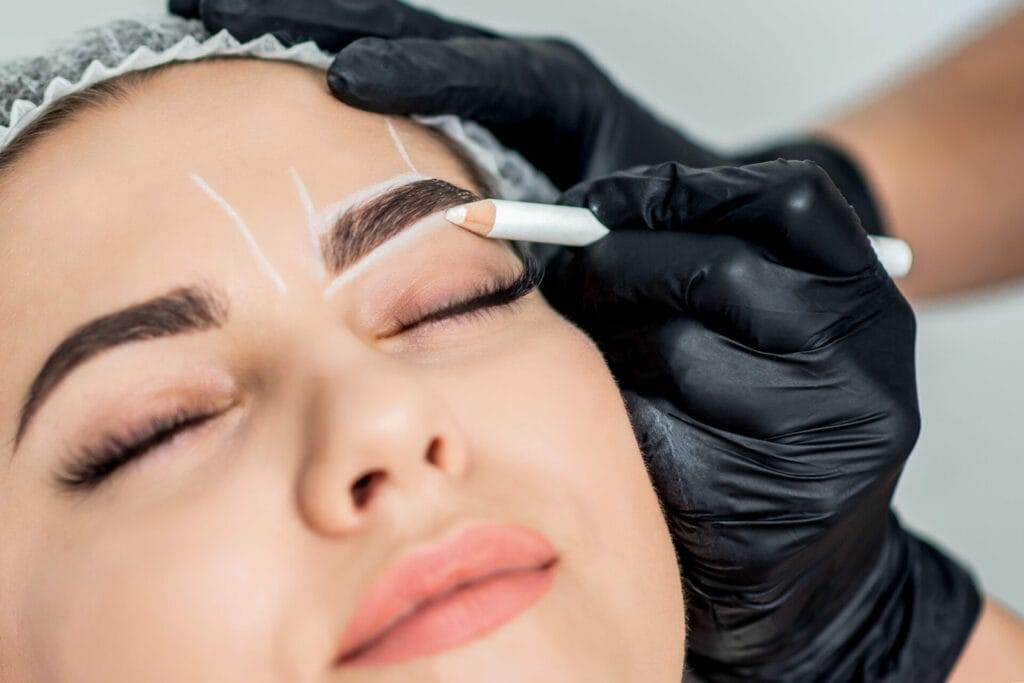
Choosing a trained and certified microblading artist is crucial to ensure the best results and minimize the risks associated with the procedure. Microblading is a delicate process that requires a thorough understanding of facial anatomy, color theory, and proper sterilization techniques. Without proper training, an artist may not be able to achieve the desired results or may put the client’s health at risk.
An untrained artist may not have the necessary knowledge to assess the client’s skin type, shape their eyebrows correctly, or choose the right pigments for their skin tone. This can result in uneven or unnatural-looking eyebrows that may require additional touch-ups or corrections. Additionally, an untrained artist may not follow proper sterilization protocols, increasing the risk of infection or other complications.
To find a qualified microblading artist, it is important to do thorough research and ask for recommendations from trusted sources. Look for artists who have completed reputable training programs and have certifications from recognized organizations. It is also a good idea to ask to see before-and-after photos of their previous work to ensure that their style aligns with your preferences.
The Benefits of Microblading: Enhanced Appearance and Confidence Boost
Microblading offers several benefits beyond just enhancing the appearance of eyebrows. One of the main advantages is that it can save time and effort in daily makeup routines. With microbladed eyebrows, individuals no longer need to spend time filling in their brows with pencils or powders. This can be especially beneficial for those with busy lifestyles or individuals who struggle with applying makeup due to vision impairment or other physical limitations.
In addition to saving time, microblading can also provide a psychological boost by improving self-confidence. Well-defined and symmetrical eyebrows can frame the face and enhance facial features, giving individuals a more polished and put-together look. This can lead to increased self-esteem and a more positive body image.
The Different Types of Microblading: Ombre, Powder, and Feathered Brows
Microblading techniques have evolved to offer different options for individuals with varying eyebrow preferences. Three popular types of microblading techniques are ombre brows, powder brows, and feathered brows.
Ombre brows involve creating a gradient effect on the eyebrows, with the inner part of the brow being lighter and gradually getting darker towards the tail. This technique gives a soft and natural-looking result and is suitable for individuals who prefer a more subtle enhancement.
Powder brows, on the other hand, involve creating a more solid and filled-in appearance. This technique is achieved by shading the entire eyebrow area, resulting in a soft powdered effect. Powder brows are a great option for individuals who prefer a bolder and more defined look.
Feathered brows, also known as microfeathering, involve creating hair-like strokes that mimic the natural growth pattern of eyebrows. This technique is ideal for individuals with sparse or thin eyebrows, as it can create the illusion of fuller and more natural-looking brows.
The choice between these different types of microblading techniques depends on individual preferences and desired outcomes. It is important to consult with a qualified microblading artist to determine which technique is best suited for your eyebrows.
The Role of Technology in Microblading: Digital Tools and Equipment
Technology has played a significant role in advancing microblading techniques and improving the overall experience for both artists and clients. Digital tools and equipment have made it possible to achieve more precise measurements and calculations, resulting in symmetrical and natural-looking eyebrows.
Digital tools such as eyebrow mapping devices can help artists accurately measure and shape the eyebrows according to each individual’s facial features. These tools take into account factors such as face shape, bone structure, and eye placement to create customized designs that enhance the client’s natural beauty.
Digital equipment such as digital pigment machines have also made the process of depositing pigment into the skin more efficient and controlled. These machines allow for more precise control over the depth and pressure of the needles, resulting in less discomfort for the client and more consistent results.
While technology has undoubtedly improved microblading techniques, it is important to strike a balance between relying on technology and maintaining the artist’s artistic touch. Over-reliance on digital tools and equipment may result in a cookie-cutter approach that lacks the individuality and creativity that comes with traditional microblading techniques.
The Future of Microblading: Advancements and Innovations
Microblading is a constantly evolving field, and there is potential for new advancements and innovations in the future. One area of potential advancement is in the development of new pigments and color-matching techniques. As technology improves, it may become possible to create pigments that are even more natural-looking and longer-lasting.
Another area of potential advancement is in the development of new tools and equipment. As technology continues to advance, we may see the introduction of more advanced digital tools that can further enhance precision and customization in microblading techniques.
Furthermore, advancements in training programs and certification processes may lead to higher standards in the industry. This can help ensure that all microblading artists are properly trained and equipped with the necessary skills to provide safe and high-quality services.
The Risks and Precautions of Microblading: Safety Measures and Aftercare
While microblading is generally considered safe when performed by a trained professional, there are still risks associated with the procedure. One of the main risks is infection, which can occur if proper sterilization protocols are not followed. It is important to choose an artist who uses sterile equipment, disposable needles, and follows strict hygiene practices.
Another risk is an allergic reaction to the pigments used during the procedure. It is important to discuss any known allergies or sensitivities with the microblading artist beforehand to ensure that suitable pigments are used.
Proper aftercare is also crucial to minimize the risk of complications and ensure optimal healing. After the procedure, it is important to keep the treated area clean and avoid touching or scratching the eyebrows. It is also important to avoid exposure to excessive heat, sunlight, or water during the healing process.
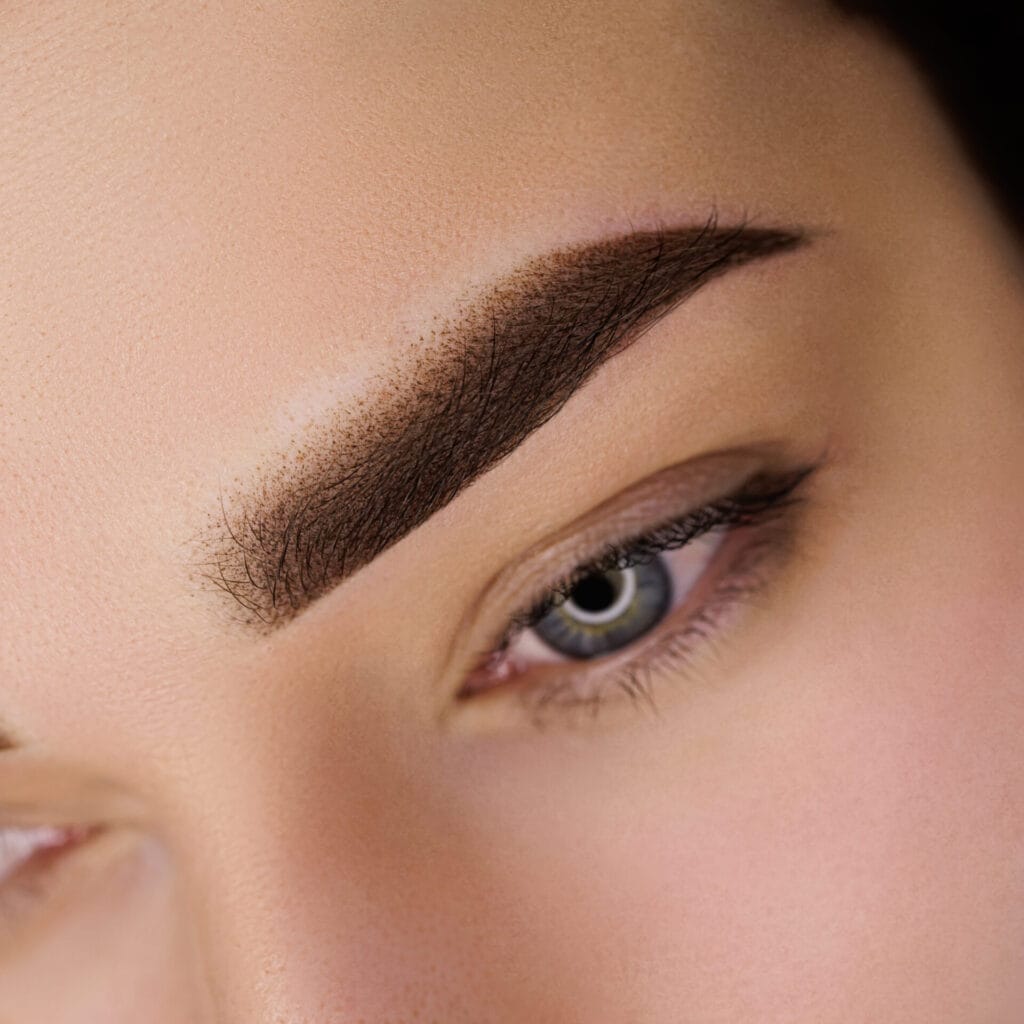
Microblading as a Timeless Beauty Trend for All Ages and Genders
Microblading has become a timeless beauty trend that continues to gain popularity due to its ability to enhance the appearance of eyebrows and boost self-confidence. With its long-lasting results and natural-looking effects, microblading offers a convenient solution for individuals who want to achieve fuller and more defined eyebrows.
Whether you have sparse eyebrows, have lost your eyebrows due to medical conditions, or simply want to enhance your natural brows, microblading can provide a customized solution that suits your preferences. However, it is important to choose a qualified and certified microblading artist who can ensure safe and high-quality results.
As microblading techniques continue to evolve and advancements in technology are made, we can expect even more precise and natural-looking results in the future. Microblading is a trend that will continue to endure, benefiting people of all ages and genders who desire well-defined and symmetrical eyebrows.


